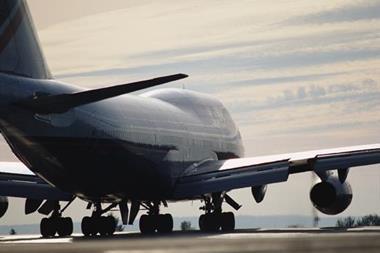Jackie Maguire and Sue Ratcliffe provide a guide to global IP protection
Having the right intellectual property (IP) protection is an important part of commercial strategy. The company and its investors can move forward, knowing that the IP properly underpins their investment decisions. Once protected, the business can enforce its rights and start to build a strategy for doing business in far-flung parts of the world.
Unfortunately seeking IP protection can seem a daunting, time-consuming and convoluted business, because each country has different processes and the pitfalls in obtaining IP vary. For companies trading across several countries, protection of IP is certainly possible – most people would say essential – but not always very straightforward. There are, however, some simple steps that can be taken alongside professional pragmatic advice.
If an organisation has decided to trade in a particular country, it needs to try to extend protection as soon as possible in that country. It should consider a number of routes, for example, patents, trademarks and designs – trademarks and designs being a particularly important part of any marketing strategy.
We recommend wherever possible registering the rights to inventions, trademarks or designs. Filing an application shows that a company values its rights, and the fact that an application has been filed also establishes a record of when rights came into being. Overseas rights that are not registered are very difficult, if not impossible to protect.
Things are changing. India and China now have more efficient patent and trademark offices for processing applications than previously. In fact China has recently implemented procedures whereby regional offices can now process trademark applications in order to speed up prosecution of cases.
Patents protect inventions on a country-by-country basis, though there are some regional systems for filing multi-country applications. For example, it is possible to file patents through the PCT (patent co-operation treaty) which provides a centralised process.
Over 100 countries are party to the PCT. Organisations can file a single international patent application with a PCT receiving office in one language and in accordance with one set of rules, seeking simultaneous patent protection in a number of PCT contracting states. This leaves a number of countries that require individual attention – for example, some South American and Arab countries, Taiwan and Thailand – that are currently not part of the PCT system.
Many companies start by filing a patent application (the priority application) with their national office and then proceed after 12 months to PCT, as this defers costs. After a PCT application has been filed, a PCT international search authority will carry out a search and provide the organisation with a general view on the patentability of the invention. The International Bureau will publish the application as soon as possible after 18 months from the priority date. There is also the option of requesting international preliminary examination to give a more formal view on the patentability.
Following these processes, it is necessary to decide exactly where protection is required, because the PCT application has to be split into ‘national phase’ applications. The time limit varies from country to country; for the UK the date is 31 months from filing the priority application. When it is granted in the individual contracting states, the patent will provide protection in the same way as a national patent does, and will be subject to national laws.
“Overseas rights that are not registered are very difficult, if not impossible to protect.
In Europe, the European Patent system applies, but when launching products it is also important to consider distribution strategies. This is because in the EU different trade restraints apply. It is especially important to consider competition law, which covers the free movement of goods around the EU and the avoidance of the abuse of a dominant position in the market.
So organisations generally have several routes for obtaining patent protection. The best route to choose will depend on the countries to be covered, the stage of development of the technology and the nature of revenue streams and cash flow.
Enforcement
In most countries where it is possible to register rights, it is possible to enforce them through the national patent offices or courts. Customs and border controls are also used to prohibit infringement of rights across borders.
In some countries many agencies work together. For example, in China many governmental agencies are responsible for the administrative protection of patent rights, and the main enforcement agencies are the patent authorities and the administrative authorities of customs. The patent authorities cover the provinces, the autonomous regions and the municipalities, and all these authorities are under the control of the central government. The authorities of the cities or districts are responsible for the patent affairs in their administrative areas. This means that it is important to investigate the situation thoroughly before taking action, to ensure that the right authorities are handling a case.
The General Administration of Customs operates at the port of entry or exit to and from China, and is responsible for IP rights protection across borders. The People's Courts also deal with infringement of patent rights and cases of patent disputes and can impose criminal sanctions, which may be harsh.
We recommend that to minimise risk, organisations not only have appropriate patent, design and trademark protection in place, but also well-written contracts. Contracts with suppliers, for example, should ensure that subcontractors of the company they are dealing with are not allowed to use patents, designs, trademark (or other IP that needs to be protected) without a specific licence from you to do so.
National variations
Attitudes to IP vary widely from country to country. In China and India, for example, some foreign companies have got into difficulties in the past when trying to prevent others using their IP, largely because reproduction of goods and designs historically has been how business is done in those countries. Employees of a company may sometimes not even be aware that such reproduction is forbidden.
“Organisations can run into problems such as the idiosyncrasies of local legal systems.
In India, the situation is improving – the US in particular is pressing hard to enforce IP rights. Whereas in South Africa it can be relatively quick and painless to secure patents, in Japan it can be a slow process because of the strict examination procedures. Organisations do then have strong IP rights in place with greater chances of enforcement. Russia is now becoming active in IP protection and has a fairly straightforward patent procedure.
The following example shows how IP issues are being taken increasingly seriously in some countries and particularly in China. A patent infringement lawsuit has recently been won by a Chinese company against a French company and its Chinese sales agent. The very large amount of damages awarded is thought to be the biggest award for damages in relation to an IP case in China.
There were a number of patent infringement disputes between the companies, starting in the mid 1990s. Over the following years, the French company issued a number of lawsuits against the Chinese company for IP infringement in a number of countries. In 2006, a lawsuit was filed by the Chinese company against the French company for patent infringement in China. This action concerned a patent on a utility model for a miniature circuit breaker which the French company used in manufacturing its products. As a tit for tat measure, an application was made by the French company to invalidate the Chinese company's patent, claiming that the French company used the technology covered by the Chinese company's patent before the Chinese company filed their patent application, thereby invalidating the patent. In 2007, the Chinese State Intellectual Property Office (SIPO) rejected the French case and upheld the Chinese patent.
Following this, the French company started an action before The Beijing Intermediate People's Court asking that it reconsidered the decision of the SIPO. Again, the decision was in favour of the Chinese company, and the French company and its associates were told to stop selling the circuit breakers in China. In addition, the French company was asked to pay damages of over $40m.
Not only do IP protection requirements differ from country to country, but each organisation looking to protect its IP has different elements to consider. It is important to be clear about exactly what it needs to protect. The best route to obtain the protection can then be chosen, taking into account the best country in which to litigate (or in the US, which state) to enforce rights, taking into account different laws – including competition law in Europe and anti-trust laws in the US.
The penalties for flouting anti-trust laws in the US and competition law in the EU can be severe. Under EU competition law organisations can be fined 10% of global profits if they get it wrong. And not all organisations are in favour of protecting IP – open source groups, for example, exist to ensure that everyone has access to widely used IT standards for the common good of all.
In some countries organisations can run into problems such as the idiosyncrasies of local legal systems, and language problems, but if local advice is sought, these can be dealt with quite easily. If possible, organisations should check to see if the patent/trade mark attorneys are registered. For example, if UK based companies use a chartered patent attorney or a registered trademark attorney, they may well have contacts in most overseas jurisdictions and so can recommend local attorneys to help with enforcing rights.
Patent protection overseas can be complex. We recommend taking advice at an early stage to ensure pitfalls are avoided, opportunities maximised and costs are kept to a minimum. It can be time-consuming and costly to sort out errors later. In addition, contracts need to be reviewed on a regular basis to ensure that, as organisations and legislation change, full protection remains in place.
Postscript
Jackie Maguire is CEO and Sue Ratcliffe is patent/trademark attorney, Coller IP Management, www.colleripmanagement.com

















No comments yet